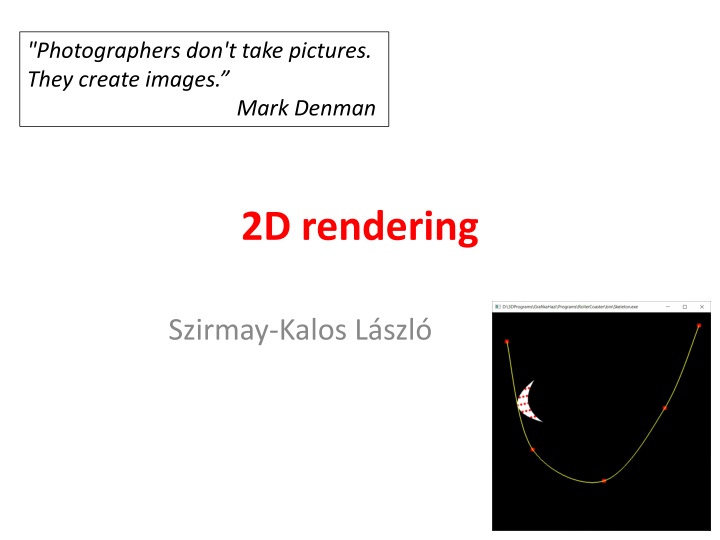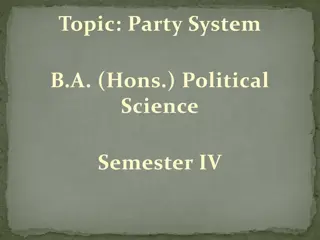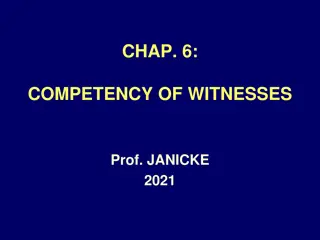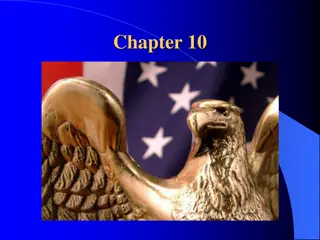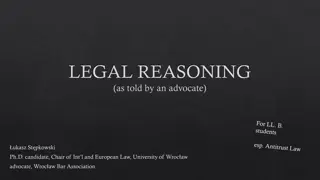Legal Competency of Parties in Business Law
Capacity to contract in business law is crucial for valid agreements. This includes understanding the legal competence of parties, such as minors and individuals of unsound mind. Learn about minors' contracts, liabilities, and limitations in contracting under Indian Law.
Download Presentation

Please find below an Image/Link to download the presentation.
The content on the website is provided AS IS for your information and personal use only. It may not be sold, licensed, or shared on other websites without obtaining consent from the author.If you encounter any issues during the download, it is possible that the publisher has removed the file from their server.
You are allowed to download the files provided on this website for personal or commercial use, subject to the condition that they are used lawfully. All files are the property of their respective owners.
The content on the website is provided AS IS for your information and personal use only. It may not be sold, licensed, or shared on other websites without obtaining consent from the author.
E N D
Presentation Transcript
"Photographers don't take pictures. They create images. Mark Denman 2D rendering Szirmay-Kalos L szl
2D rendering Image Model viewport Unit=pixel Camera window Drawing with object color World coordinate system
Pixel driven 2D rendering Model Image viewport Camera window Unit=pixel
Pixel driven: Point containment Implicit curve boundary: + > 0 : one side ?(?,?) = 0 : on boundary < 0 : other side ? Pixels ? ?(?) = |? ?|2 ?2 Parametric curve boundary: out in 3 2 boundary 1 Infinity is out!
Pixel driven rendering struct Object { // base class vec3 color; virtual bool In(vec2 r) = 0; // containment test }; struct Circle : Object { vec2 center; float R; bool In(vec2 r) { return (dot(r-center, r-center) R*R < 0); } }; struct HalfPlane : Object { vec2 r0, n; // position vec, normal vec bool In(vec2 r) { return (dot(r r0, n) < 0); } }; struct GeneralEllipse : Object { vec2 f1, f2; float C; bool In(vec2 r) { return (length(r-f1) + length(r-f2) < C); } }; struct Parabola : Object { vec2 f, r0, n; // f=focus, (r0,n)=directrix line, n=unit vec bool In(vec2 r) { return (fabs(dot(r-r0, n)) > length(r f));} };
Pixel driven rendering class Scene { // virtual world list<Object *> objs; // objects with decreasing priority Object *picked = nullptr; // selected for operation public: void Add(Object * o) { objects.push_front(o); picked = o; } void Pick(int pX, int pY) { // pX, pY: pixel coordinates vec2 wPoint = Viewport2Window(pX, pY); // transform to world picked = nullptr; for(auto o : objs) if (o->In(wPoint)) { picked = o; return; } } void BringToFront() { if (picked) { // move to the front of the priority list objs.erase(find(objs.begin(), objs.end(), picked)); objs.push_front(picked); } } void Render() { for(int pX=0; pX<xmax; pX++) for(int pY=0; pY<ymax; pY++) { vec2 wPoint = Viewport2Window(pX, pY); // wPoint.x=a*pX+b*pY+c for(auto o : objs) // object covers the pixel if (o->In(wPoint)) { image[pY][pX] = o->color; break; } } } };
Object driven 2D rendering Image Model viewport Unit=pixel Camera window Drawing with own color Ascending priority World coordinate system
Object-driven rendering: 2D pipeline World Reference state (modeling space) Modeling transform vectorization window K perny re vet t s Screen or appWindow viewport viewport (1,1) Clipping + viewport transform rasterization (-1,-1) Normalized device space Screen space
Object-driven rendering: 2D pipeline World Reference state (modeling space) CPU program C++ GPU VAOs GPU Modeling transform vectorization Vertex shader GLSL window K perny re vet t s Screen or appWindow GPU Frag- ment Shader GLSL viewport viewport GPU Frame buffer (1,1) Clipping + viewport transform Fixed pipeline GPU rasterization (-1,-1) Normalized device space Screen space
Vectorization ? ? ,? [?start,?end] ?1 ?? ?start,?end: ??= ?start+ ?end ?start?/? ?0= ? ?0,?1= ? ?1, ,??= ? ?? ?0 For HW support Line strip line segments Curve Region boundary line loop = polygon triangles
Decomposing a polygon to triangles Non-diagonal Cutting at a diagonal reduces the number of vertices Concave: ?(?4) Convex: ?(?) diagonal Theorem: Every simple polygon of 4+ vertices has diagonal, i.e. it can be decomposed to triangles via diagonals.
Simple polygons Non-simple polygon Simple polygon
Ear ?? 1 ??is each if ?? 1 diagonal Ear can be cut! Ear cutting: Find an ear and cut! ?(?3) ??+1is diagonal ?? ??+1 Two ears theorem: Every simple polygon of 4+ vertices has at least 2 ears.
Ear cutting: ?(?3) 1 3 (x22, y22) 2 (x12, y12) Line segment to line segment: x1(t1)=x11t1+x12(1-t1) y1(t1)=y11t1+y12(1-t1), t1 (0,1) x2(t2)=x21t2+x22(1-t2) y2(t2)=y21t2+y22(1-t2), t2 (0,1) x1(t1)= x2(t2) y1(t1)= y2(t2) (x21, y21) 4 3 ? t1,t2 (0,1) 0 (x11, y11)
Modeling transformation Matrices are computed on the CPU, transformations are executed by the GPU Homogeneous linear transformation: xworld,yworld,zworld,wworld= [xmodel,ymodel,zmodel,1] ?4 4 Special case: 2D affine modeling transformation: ?? 0 0 0 0 ?? 0 0 1 0 0 0 1 0 ?? 0 0 0 0 0 0 1 cos(?) sin(?) 0 0 sin(?) cos(?) 0 0 0 0 0 0 0 0 1 0 0 0 0 0 0 1 ?4 4= ??
mat4 class struct mat4 { // row-major matrix 4x4 vec4 rows[4]; mat4(vec4& it, vec4& jt, vec4& kt, vec4& ot) { rows[0]=it; rows[1]=jt; rows[2]=kt; rows[3]=ot; } vec4& operator[](int i) { return rows[i]; } }; inline vec4 operator*(vec4& v, mat4& m) { return v.x*m[0] + v.y*m[1] + v.z*m[2] + v.w*m[3]; } inline mat4 operator*(mat4& ml, mat4& mr) { mat4 res; for (int i = 0; i < 4; i++) res.rows[i] = ml.rows[i] * mr; return res; }
mat4 constructors inline mat4 TranslateMatrix(vec2 t) { return mat4( vec4(1, 0, 0, 0), vec4(0, 1, 0, 0), vec4(0, 0, 1, 0), vec4(t.x, t.y, 0, 1)); } inline mat4 ScaleMatrix(vec2 s) { return mat4( vec4(s.x, 0, 0, 0), vec4(0, s.y, 0, 0), vec4(0, 0, 1, 0), vec4(0, 0, 0, 1)); } inline mat4 RotationMatrix(float fi) { return mat4( vec4( cos(fi), sin(fi), 0, 0), vec4(-sin(fi), cos(fi), 0, 0), vec4(0, vec4(0, } 0, 0, 1, 0), 0, 1));
View transformation: V() Camera window center to origin world ?? ?? (?cam,?cam) (?world,?world) ?? ?cam= ?world ?? ?cam= ?world ?? ?? (??,??) window window 1 0 0 0 1 0 0 0 1 0 0 0 0 1 xcam,ycam,zcam,1 = [xworld,yworld,zworld,1] ?? ??
Projection P(): Camera window to a square of corners (-1, -1) and (1, 1) ?? (1,1) (?cam,?cam) ?? (?ndc,?ndc) ?ndc= ?cam 2/?? ?ndc= ?cam 2/?? Normalized device ( 1, 1) window 2/?? 0 0 0 0 0 0 1 0 0 0 0 1 2/?? 0 0 xndc,yndc,zndc,1 = [xcam,ycam,zcam,1]
2D camera class Camera2D { vec2 wCenter;// center in world coords vec2 wSize; // width and height in world coords public: mat4 V() { return TranslateMatrix(-wCenter); } mat4 P() { // projection matrix: return ScaleMatrix(vec2(2/wSize.x, 2/wSize.y)); } mat4 Vinv() { return TranslateMatrix(wCenter); } mat4 Pinv() { // inverse projection matrix return ScaleMatrix(vec2(wSize.x/2, wSize.y/2)); } void Zoom(float s) { wSize = wSize * s; } void Pan(vec2 t) { wCenter = wCenter + t; } };
Clipping (GPU) Point clipping: x > xmin= -1 x < xmax= +1 y > ymin= -1 y < ymax= +1 ymax (x, y) xmax Inside xmin ymin Outside
Clipping x > xmin xmin (x, y) Inside Outside
Clipping y > ymin Inside (x, y) ymin Outside
Clipping x < xmax xmax (x, y) Inside Outside
Clipping y < ymax Outside (x, y) Inside
Line segment clipping: x < xmax xmax x2,y2 x1,y1 x1,y1 x2,y2 xi,yi x2,y2 x1,y1 x(t) = x1 + (x2 - x1)t, y(t) = y1 + (y2 - y1)t x = xmax Intersection: xmax= x1 + (x2 - x1)t t = (xmax-x1)/(x2-x1) xi = xmax yi= y1 + (y2 - y1) (xmax-x1)/(x2-x1)
(Ivan) Sutherland-Hodgeman poligon clipping p[2] p[3] p[4] q[2] q[3] PolygonClip(p[n] q[m]) m = 0; for(i=0; i < n; i++) { if (p[i] inside) { q[m++] = p[i]; if (p[i+1] outside) q[m++] = Intersect(p[i], p[i+1], boundary); } else { if (p[i+1] inside) q[m++] = Intersect(p[i], p[i+1], boundary); } } } p[5] p[1] q[4] p[0] q[1] q[0] Insert the first point at the end as well.
Clipping in homogeneous coordinates ?(?) = ?1 + (?2 ?1)? ?(?) = ?1 + (?2 ?1)? Goal: 1 < ? = ?/? < 1 1 < ? = ?/? < 1 1 < ? = ?/? < 1 1 = ????< ? < ????= 1 1 = ????< ? < ????= 1 ? > 0 ? < 0 ? > ? > ? ? > ? > ? ? > ? > ? ? < ? < ? ? < ? < ? ? < ? < ? GPU solves only this
Line segment clipping in homogeneous coordinates ? < ? < ? ? < ? < ? ? < ? < ? ? = ?1 (1 ?) + ?2 ? = = ? = ?1 (1 ?) + ?2 ? ? = ? = ? [?1,?1,?1,?1] ? = ?1 (1 ?) + ?2 ? ? = ?1 (1 ?) + ?2 ? ? = ?1 (1 ?) + ?2 ? ? = ?1 (1 ?) + ?2 ? [?2,?2,?2,?2]
Viewport transformation: From normalized device space to screen space Normalized device Screen (1,1) ?? (?pix,?pix) (?ndc,?ndc) ? ?pix= ??(?ndc+ 1)/2 + ?? ?pix= ? (?ndc+ 1)/2 + ?? (??,??) viewport ( 1, 1) ?pix= (?ndc+ 1)/2 Unit=pixel glViewport(vx, vy, vw, vh);
Rasterization (GPU) Primitives model 2-3 vertices / primitive viewport transformation MVP clipping transformation 2 muls + 2 adds 4 muls + 4 adds 4 comps rasterization Pixel ops Pixels Many (!) pixels nanosec/pixel Frame buffer
Line segment rasterization Explicit equation of the line: y = mx + b Drawing algorithm: for( x = x1; x <= x2; x++ ) { Y = m*x + b; y = Round( Y ); write( x, y ); } x1 x2
Babbages Difference Engine Incremental principle and fixed point implementation Y(x)=mx+b =Y(x-1)+m const int T=12; LineFix (short x1, short y1, short x2, short y2) { int m = ((y2 - y1)<<T)/(x2 - x1); int Y = (y1<<T) + (1<<(T-1)); for(short x = x1; x <= x2; x++) { short y = Y>>T; write(x, y, color); Y = Y+m; } } LineFloat (short x1, short y1, short x2, short y2) { float m = (y2 - y1)/(x2 - x1); float Y = y1; for(short x = x1; x <= x2; x++) { short y = round(Y); write(x, y, color); Y = Y+m; } }
DDA line rasterization hardware X Y x counter y register 10 CLK x1 y1 m
Naive triangle fill (?3,?3) (?2,?2) (?1,?1)
Incremental triangle fill (X3,Y3) y = mx + b 1/m 1/m (X2,Y2) y x(y) x(y+1) x(y+2) (X1,Y1) x(y+1) = x(y)+1/m
Pixel color? Uniform Calculating from interpolated vertex properties Texturing (2D): Interpolation of vertex texture coordinates + texture fetch.
Excercises Prove that any polygon of at least 4 vertices has a diagonal! Prove the two ears theorem! Does it make sense to develop a circle rasterization algorithm? Write a polygon filling algorithm that can handle even non-simple polygons (the boundary can be built of multiple polylines and may intersect itself). Implement the learnt clipping and rasterization algorithms! Write a program that decides whether an axis aligned window may contain any primitive. Give the class diagram of a PowerPoint like program. What is the reason behind the introduction of normalized device space?
